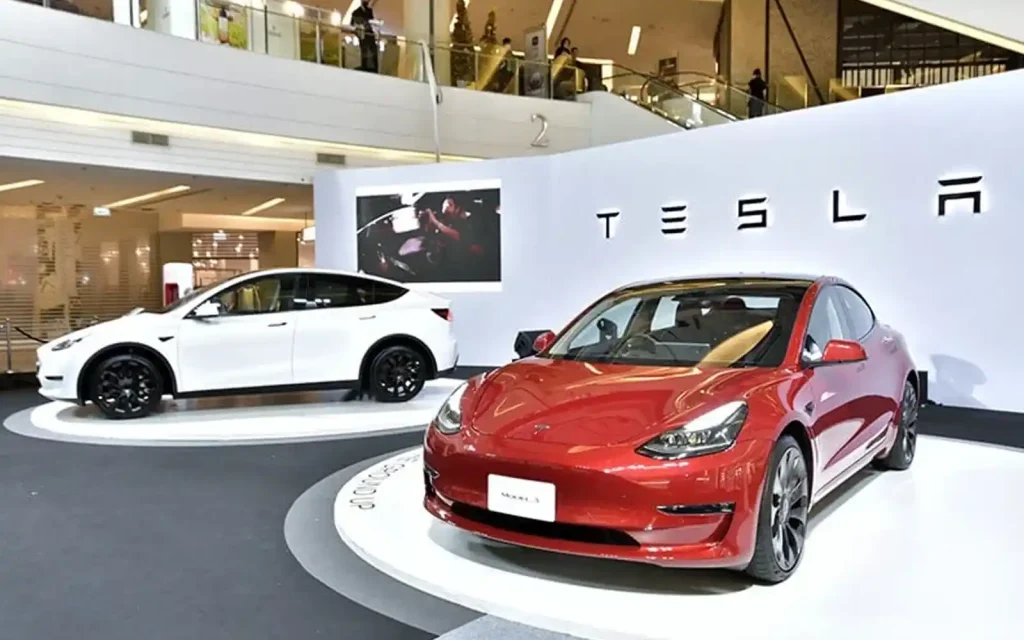Tesla Stock (TSLA) Reverses 7% After Historic Jump, Resistance and Support Levels Tested
Tesla stock fell 7% today but it’s still 13% up for the week, after Wednesday’s massive bounce off the support level.

Market Euphoria Fades: Dow and Tesla Retreat After Historic Rebound
After Tuesday’s euphoric rally—sparked by a surprise policy shift on tariffs—the U.S. stock market gave back a chunk of its gains on Wednesday. The Dow Jones Industrial Average, which surged over 3,000 points the day before, reversed sharply, falling 1,015 points, or 2.5%, by the close. Intraday, it was down as much as 5%, signaling lingering investor caution despite Tuesday’s optimism.
Tuesday’s rally was fueled by President Donald Trump’s decision to pause reciprocal tariffs for 90 days on all countries except China. The move temporarily eased global trade tensions, helping lift investor sentiment and spark broad gains across equity markets. However, Wednesday’s renewed selling suggests skepticism about the rally’s sustainability—particularly as the U.S.–China trade conflict remains unresolved and broader economic uncertainty persists.
TSLA Chart Daily – Buyers Fail at the 50 SMA Again
Tesla (TSLA) mirrored the broader market mood. The stock jumped 23% on Tuesday, rallying from $221.80 to $272.20—a single-day gain of over $50—after a strong bounce from long-term support. But that rally lost steam just as quickly. On Wednesday, TSLA opened at $260, dipped as low as $239.90, and closed at $252.40, down 7% on the day and now 35% lower year-to-date.
Technical indicators show that Tesla’s price was rejected again at the 50-week simple moving average—a level that has acted as consistent resistance over the past several weeks. While the stock is still hovering near a key support zone, current sentiment around tech remains fragile, and any bullish setup will likely require a decisive breakout above that moving average to hold.
Cathie Wood Remains Firm on Tesla’s Long-Term Potential
Despite the recent pullback, ARK Invest CEO Cathie Wood reiterated her long-term bullish stance on Tesla. In her view, short-term volatility hasn’t changed the fundamentals that continue to set Tesla apart from its competitors.
Wood pointed to Tesla’s U.S.-centric supply chain as a major advantage amid increasing geopolitical risks—especially the deepening rift between the U.S. and China. With less reliance on foreign parts, Tesla is better positioned to weather potential supply disruptions and trade policy shifts.
The $30,000 EV: A Game-Changer in the Making
A key driver of Wood’s optimism is Tesla’s upcoming low-cost electric vehicle, expected to be unveiled this quarter. With a projected starting price around $30,000—about half that of a standard Model Y—the model is designed to broaden access to electric vehicles and significantly increase Tesla’s total addressable market.
“This will help bring affordability back into auto buying,” Wood noted, emphasizing the potential for Tesla to lead a new wave of mass-market EV adoption. She believes the introduction of this model could be a watershed moment, not only for Tesla’s growth but for the EV sector as a whole.
Innovation Keeps the Long-Term Story Alive
Wood also highlighted Tesla’s continued investment in future-facing technologies—including autonomous driving, energy storage, and battery development—as central to its long-term value proposition. Despite macroeconomic headwinds and cooling demand in some markets, she remains confident that Tesla’s innovation pipeline will keep the company on a strong growth trajectory.
In her view, the recent price swings are more noise than signal, and investors willing to look beyond short-term fluctuations may find compelling long-term value in TSLA. As the company continues to push the boundaries of EV technology and expand its product lineup, Wood believes Tesla remains one of the most transformative forces in the automotive and clean energy industries today.
Dow Jones Live Chart





